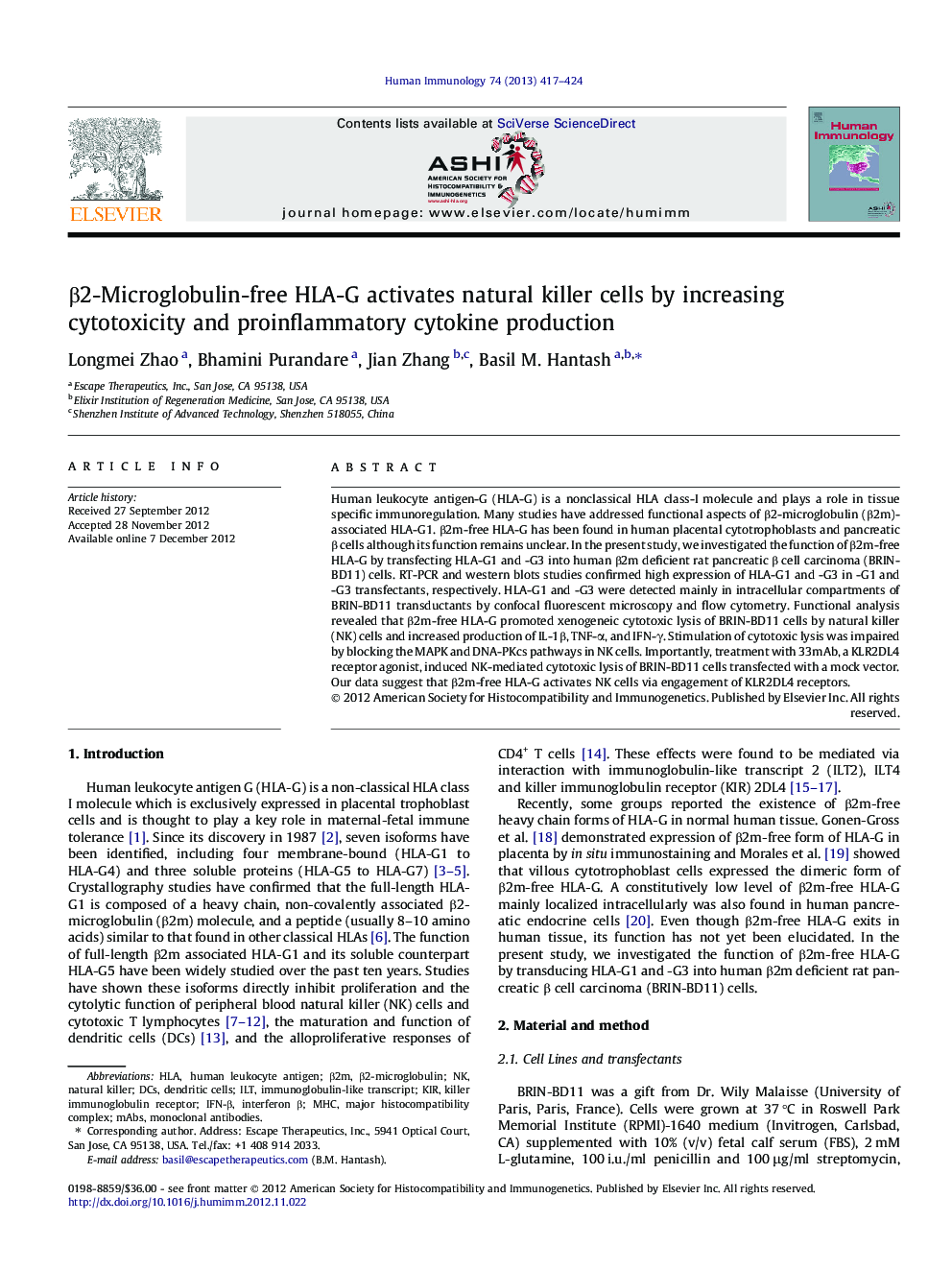| Article ID | Journal | Published Year | Pages | File Type |
|---|---|---|---|---|
| 6116734 | Human Immunology | 2013 | 8 Pages |
Abstract
Human leukocyte antigen-G (HLA-G) is a nonclassical HLA class-I molecule and plays a role in tissue specific immunoregulation. Many studies have addressed functional aspects of β2-microglobulin (β2m)-associated HLA-G1. β2m-free HLA-G has been found in human placental cytotrophoblasts and pancreatic β cells although its function remains unclear. In the present study, we investigated the function of β2m-free HLA-G by transfecting HLA-G1 and -G3 into human β2m deficient rat pancreatic β cell carcinoma (BRIN-BD11) cells. RT-PCR and western blots studies confirmed high expression of HLA-G1 and -G3 in -G1 and -G3 transfectants, respectively. HLA-G1 and -G3 were detected mainly in intracellular compartments of BRIN-BD11 transductants by confocal fluorescent microscopy and flow cytometry. Functional analysis revealed that β2m-free HLA-G promoted xenogeneic cytotoxic lysis of BRIN-BD11 cells by natural killer (NK) cells and increased production of IL-1β, TNF-α, and IFN-γ. Stimulation of cytotoxic lysis was impaired by blocking the MAPK and DNA-PKcs pathways in NK cells. Importantly, treatment with 33mAb, a KLR2DL4 receptor agonist, induced NK-mediated cytotoxic lysis of BRIN-BD11 cells transfected with a mock vector. Our data suggest that β2m-free HLA-G activates NK cells via engagement of KLR2DL4 receptors.
Keywords
Related Topics
Life Sciences
Immunology and Microbiology
Immunology
Authors
Longmei Zhao, Bhamini Purandare, Jian Zhang, Basil M. Hantash,
